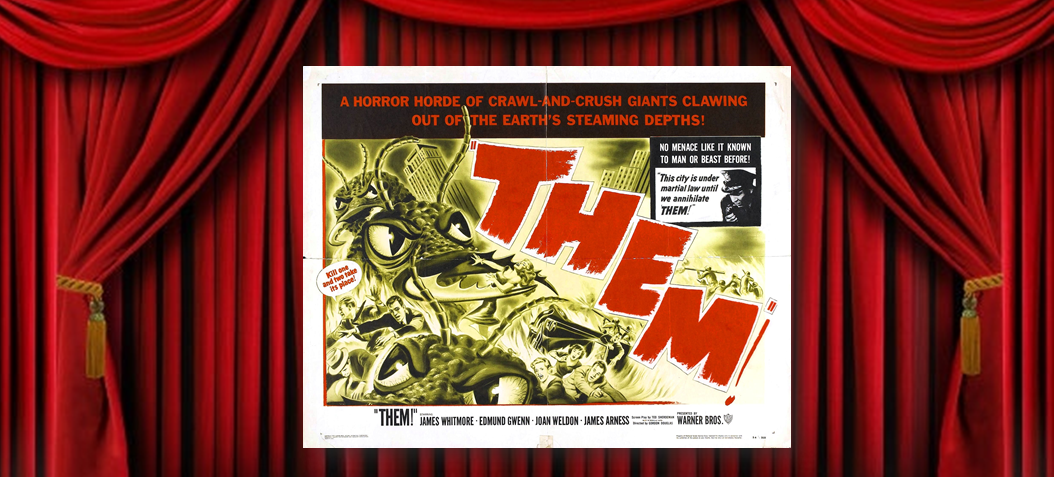A Four Minute Read.
At an unnamed expensive grocery-store-that-also-is-an-internet-bookseller, it took over 20 minutes to get a smoothie made. When the customer returned to attempt getting the correct drink prepared, he mentioned to the cashier/smoothie-maker how long it had taken; with a What-Can-You-Do? Shrug told him, “They are very short staffed today.”
She was the only one working the counter.
Who is this “They” that is short-staffed?  “They” implies someone else: The Deli counter? Receiving? Regardless how well staffed “They” are, it shouldn’t impact “our” ability to produce smoothies. If she meant the Smoothie Division was short-staffed… Well, wouldn’t that have been a “We are” or an “I am” excuse?
“They” implies someone else: The Deli counter? Receiving? Regardless how well staffed “They” are, it shouldn’t impact “our” ability to produce smoothies. If she meant the Smoothie Division was short-staffed… Well, wouldn’t that have been a “We are” or an “I am” excuse?
That is no small point. Last year, American companies spent 2.7 gajillion dollars promoting their brand images, and another 1.2 bazilllion dollars on organizational teambuilding initiatives. When an employee refers to her colleagues and corporation as “they”, she is setting herself apart from the team, literally creating an Us vs. Them dynamic. She is saying to her customer, “I am on your side – it’s these clowns around me that make me provide crappy service, wasting your time and money.”
Consciously or not, confusing “We” and “They” creates divisiveness and perpetuates internal conflict, while sending an antagonistic message to customers.
It was the weekly production planning meeting and, drinking bad coffee laced with generic non-dairy creamer, sat the Chairman of the Company; his son, the President; his other son, the Vice President of Marketing; the Plant Manager, 27 years on the job and son of the previous Plant Manager; the Logistics Manager, brother-in-law of the Marketing VP; the Director of Human Resources, the President’s wife, and; the Director of Operations (no relation).
The Marketing VP was in an existential panic over a new order, and the Logistics Manager and Ops Director were brainstorming potential solutions. As is typical in such so-called crises, responses involved throwing resources at the problem – labor, materials, production time. Every idea the two came up with was given the kibosh by the Plant Manager, with the reply: “They will never allow that!”
Operations asked him, “Who’s ‘They’?”, to which he replied, “You know – The Company.”
Who is “The Company” if not the people in that room? If “They” didn’t like one of the ideas being shared, “They” were certainly able to speak for themselves!
Who is “They”?
Hourly employees torque each other up – “They said we can’t do that”, “They wrote Jimmy up for that,” “They are taking that benefit away.”
So, clearly, “They” must be management!
But let’s listen in on a management meeting:
“They never do what they’re told.”
“Why can’t They just include it in the report?”
“I don’t know why you keep making
excuses for Them. They have to go!”
Wait. So Management thinks employees are “They” and the Rank and File think Management is “They”?
If everyone is “They”, then no one is “They”.
There Is No ‘They’
In my earliest process design facilitations, I discovered you  would learn nothing about the Current State if participants could play the “They” card – it made the causes of problems unfindable, while absolving everyone of any accountability.
would learn nothing about the Current State if participants could play the “They” card – it made the causes of problems unfindable, while absolving everyone of any accountability.
So we banned the use of the word “They” during these sessions.
Literally, if anyone said the word “They”, the rest of the team would call them out.
Keep It Real.
We insisted that people use real names. This served two purposes –one, it allowed everyone to clearly verbalize and understand what expectations had truly been set, by whom, and under what conditions. You can’t follow up with “They” about why the expense policy is the way it is, but you can circle back to Betty and find out what’s going on.
Second, it focuses the discussion on primary sources – which can be improved upon – as opposed to tribal knowledge, which is hard to fight. Pinpointing the actual meeting where instructions were conveyed, or the email that laid out rules of engagement, allows the team to clarify objectives and expectations, and improve where necessary.
Does using real names risk creating conflict? You bet. But for teams to perform at their best, they need to seek out conflict before it metastasizes– not needlessly avoid it behind euphemisms, hoping it disappears. When everyone is playing by the same rules, it reduces the “gotcha” element and increases both accountability and transparency.
Drill Baby, Drill.
Forcing discussions on specifics instead of the general “They” also dramatically improves trouble-shooting efforts.
“They don’t care” – something said at least once by every manager and employee everywhere– offers nothing. Who doesn’t care? Bellmen? Cashiers? Boiler operators?
Drilling down, “They” becomes “The engineers don’t care.” Use names – which engineer(s)?
“The industrial engineers!” Not good enough!
“Randy doesn’t care” is better. Of course, we still need to articulate what Randy does – his observable behavior – that implies a lack of caring. But now we can go to Randy and find out why he does what he does.
This isn’t some faffing about with sophomore-year psychology. Randy may tell us he acts this way because of his understanding of priorities – which may conflict with the organization’s. Or perhaps he has received conflicting direction from different supervisors. Or hasn’t been trained how to do something properly. Or, in fact, maybe he just wants to be left alone, get his paycheck, and get the heck out of the building at shift’s end.
Whatever you discover, you can do something about. You would be helpless if you were chasing the ghosts of “They.”
It wasn’t one of Binney’s Laws – this practice of simply banning the word – but merely a Rule of Engagement. It spread beyond our sessions and became business-as-usual. In meetings and informal discussions alike, we all became attuned to the use of the word “They”, consistently challenging each other to clarify. This helped reduce tensions in union negotiations, improved collaboration between the warehouses and the plant, and more.
And, you know what they say – Nothing breeds success like success.
Wait. Who said that?

